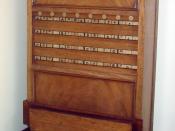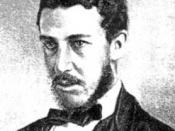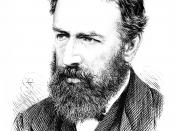Early Machines Devised to Solve Problems in Logic
The world's first real logic machine, in the sense that it could actually be used to solve formal logic problems, was invented in the early 1800s by the British scientist and statesman Charles Stanhope (third Earl of Stanhope). A man of many talents, the Earl designed a device called the Stanhope Demonstrator, which was a small box with a window in the top, along with two different colored slides that the user pushed into slots in the sides. Although Stanhope's brainchild doesn't sound like much it was a start, Stanhope wouldn't publish any details and instructed his friends not to say anything about what he was doing. In fact it wasn't until around sixty years after his death that the Earl's notes and one of his devices fell into the hands of the Reverend Robert Harley, who subsequently published an article on the Stanhope Demonstrator in 1879.
Working on a somewhat different approach was the British logician and economist William Stanley Jevons, who, in 1869, produced the earliest model of his famous Jevons' Logic Machine. The Jevons' Logic Machine was notable because it was the first machine that could solve a logical problem faster than that problem could be solved without using the machine! Jevons was an aficionado of Boolean logic, and his solution was something of a cross between a logical abacus and a piano (in fact it was sometimes referred to as a "Logic Piano"). This device, which was about 3 feet tall, consisted of keys, levers, and pulleys, along with letters that could be either visible or hidden. When the operator pressed keys representing logical operations, the appropriate letters appeared to reveal the result.
Allan Marquand who in 1881, by means of the ingenious use of rods,


